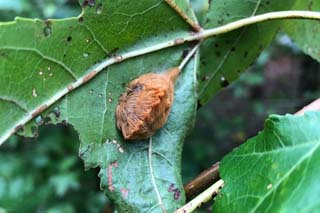
Our family really likes bugs. This year, we sorely missed attending BugFest: the annual North Carolina bug festival. Insects are an important part of most ecosystems. They pollinate flowers and foods, help control harmful pests, and they are the food source for other animals. Plus, insects are pretty fascinating. Honeybees stop buzzing during an eclipse! In unison, they all become completely silent. That’s because honeybees don’t work in the dark. But not all bugs are friendly. Here are a few common North Carolina bugs to stay away from. Note: each insect’s Latin name is hyperlinked to an image so you may learn to identify them.
Spiders When it comes to spiders, the brown recluse (Loxosceles reclusa) and black widow (Latrodectus mactans) are two dangerous species that live here in the Tar Heel state. Brown recluses are brown, nocturnal, and usually not aggressive. But their bites can be fatal. The black widow is far easier to spot: they are black and have a red hourglass on their bellies.
Kissing bugs (Triatominae) are flat and light to medium grey-brown in color. They have distinguishing stripes around their abdomen. They carry a parasite that can cause Chagas disease.
The Cow Killer, or Eastern Velvet Ant, (Dasymutilla occidentalis) is not an ant at all. It is actually a furry, black-and-red-striped wasp. You are most likely to see them at dusk.
Tussock Moth Caterpillars (Lophocampa caryae) have a number of species on the East Coast. Their bristles may cause swelling, rashes, allergic skin reactions, and some of their bristles are even venomous.
A Stinging Saddleback Caterpillar (Acharia stimulea) is easy to spot by the giant… spot on its back! Touching its bristles could make you feel nauseated.
Puss Caterpillars, pictured above, (Megalopyge opercularis) are the larval form of the southern flannel moth, and a relatively new arrival to our great state. The toxins that these stinging caterpillars carry on their hair are excruciating and could also be toxic.
If your family spends time outdoors, this old adage may be helpful: when in doubt, give a shout! That is what I was taught as a child, and it meant I needed to ask my parents (or another adult) before I touched anything I found in nature that I didn’t recognize—especially if it was red, furry, or spikey!
– Sarah Hicks, Oct 12, 2020
Are you a new NCHE member? We’d love to meet you! Introduce yourself in the comment section below, or email us at nche@nche.com. We are serious about our commitment to serving each one of our members. Thinking of becoming a member? Start here.




